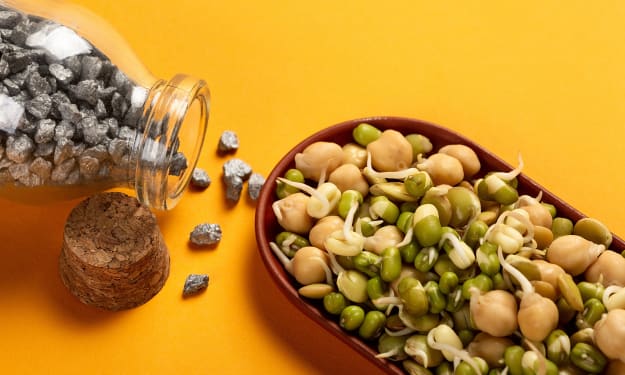A valuable Insight into the Benefits of Ash Gourd
One of the best remedy for skin problems

Introduction
Ash gourd, also known as Benincasa hispida, is a popular and versatile vegetable that has been widely used for its medicinal properties for centuries. In this article, we will delve into the pharmacognostic features of ash gourd and explore its numerous health benefits. Ash gourd, native to Southeast Asia, is a vine with large, white fruit that is extensively cultivated for culinary and medicinal purposes. Its popularity in traditional medicine systems like Ayurveda and Traditional Chinese Medicine (TCM) is attributed to its rich nutrient profile and therapeutic potential. It belongs to the Cucurbitaceae family and is characterized by its large, round or elongated shape, light green to ash-gray skin, and sweet, mild-flavored flesh. It is known by various names worldwide, such as winter melon, white gourd, wax gourd, and Chinese preserving melon.
Botanical Description
Ash gourd plants are fast-growing and have long, slender tendrils that bear large, heart-shaped leaves. The fruit itself can grow to impressive sizes and has a unique ash-like coating, giving it its name.
Macroscopy
Size and Shape
Ash gourd is one of the largest gourds, with its elongated and cylindrical shape. It can grow up to 1 meter in length and weigh several kilograms, making it an impressive addition to any garden.
Color and Texture
The ash gourd has a distinct appearance with its smooth, waxy surface. When young, it features a light green color, which gradually matures into a pale ash-like shade, thus earning its name. The flesh inside is white, firm, and seed-filled.
Cultivation and collection
Soil and Climate Requirements
Ash gourd thrives in well-drained, fertile soil and prefers a warm, tropical climate for optimal growth. Planting and Harvesting. It thrives in warm and humid climates. The ideal temperature for its growth is between 25°C to 35°C (77°F to 95°F). A pH level between 6.0 to 7.5 is considered suitable for ash gourd cultivation.
Seeds are typically sown directly in the ground or in containers. The fruits are harvested when they reach maturity and develop the characteristic ash-colored surface.
Propagation
Ash gourd is primarily grown from seeds. Seeds can be directly sown in the field or raised in nurseries and transplanted later. If you're starting from seeds, sow them in well-prepared seedbeds, and once the seedlings reach 3-4 leaf stage, they can be transplanted to the main field.
Planting
Choose a sunny location with good air circulation for planting ash gourd. Space the plants at least 1.5 to 2 meters apart to allow enough room for the vines to spread. Plant the seedlings in small pits, enriched with compost or well-rotted manure.
Watering
Adequate water supply is crucial for ash gourd farming, especially during flowering and fruiting stages. Ensure regular and consistent watering, but avoid water logging, which can harm the plants.
Fertilization
Before planting, incorporate well-rotted organic matter or compost into the soil to improve its fertility.
During the growing season, apply balanced fertilizers to support healthy growth and fruit development.
Weeding and Mulching
Regular weeding is essential to keep the growing area free from competing plants that can hinder ash gourd's growth. Mulching around the plants can help retain soil moisture and reduce weed growth.
Pest and Disease Management
Common pests that may affect ash gourd include aphids, fruit flies, and spider mites. Proper pest control measures, like using neem oil or other natural remedies, can help manage these issues. Watch out for diseases like powdery mildew and downy mildew, and take appropriate measures if you spot any signs of infection.
Harvesting
Ash gourd fruits are typically ready for harvest around 70 to 100 days after planting, depending on the variety and growing conditions. Harvest the fruits when they reach a desirable size and have a uniform green color. Handle them carefully to avoid any damage.
Storage
Ash gourds have an excellent shelf life and can be stored in a cool, dry place for several months.
Growing Ash Gourd in Your Garden
If you have a garden, consider growing your own ash gourd. Follow these planting and care tips for a successful harvest
• Choose a sunny spot with well-draining soil.
• Sow the seeds or transplant seedlings after the last frost date.
• Water regularly and provide support for the growing vines.
Phytochemical profile
Vitamins and Minerals
Ash gourd is a rich source of essential vitamins and minerals. It contains significant amounts of vitamin C, which helps strengthen the immune system and supports healthy skin. Additionally, it provides essential minerals like calcium, potassium, magnesium, and phosphorus, promoting overall well-being.
Antioxidants
This humble vegetable is also packed with antioxidants, including flavonoids and carotenoids. These powerful compounds help combat oxidative stress in the body, reducing the risk of chronic diseases and promoting anti-aging effects.
Dietary Fiber
Ash gourd is a good source of dietary fiber, aiding in digestion and promoting a healthy gut. Consuming an adequate amount of fiber can also assist in weight management and prevent constipation
Pharmacological potential
Anti-Inflammatory Effects
Some studies have indicated that ash gourd extracts may exhibit anti-inflammatory properties. This can be beneficial in reducing inflammation-related conditions and promoting tissue healing.
Anti-Diabetic Activity
Research suggests that ash gourd extracts may have hypoglycemic effects, helping to lower blood sugar levels. This potential benefit could be valuable in managing diabetes and improving insulin sensitivity.
Anti-Obesity Properties
Ash gourd is low in calories and carbohydrates, making it a suitable addition to a weight management diet. Moreover, its fiber content may aid in promoting satiety and preventing overeating.
Diuretic Effects
Traditionally, ash gourd has been used as a natural diuretic to promote urine production and help eliminate toxins from the body. This property may be beneficial for individuals with edema or urinary tract issues.
Antimicrobial Activity
Some studies have shown that ash gourd extracts possess antimicrobial properties, which could be valuable in combating certain bacterial, fungal, and viral infections.
Liver Protective Effects
Research indicates that ash gourd may exhibit hepatoprotective properties, helping to protect the liver from damage and supporting its proper functioning.
Antioxidant Properties
Ash gourd is rich in antioxidants such as vitamin C, beta-carotene, and flavonoids. These compounds help combat oxidative stress and free radicals in the body, reducing the risk of chronic diseases and supporting overall health.
Immune System Support
The presence of vitamins and minerals in ash gourd, particularly vitamin C, may contribute to a stronger immune system, helping the body fight off infections and illnesses.
Role in Weight Management
As mentioned earlier, ash gourd is low in calories and fat, making it an ideal food for weight management. Its high water content and fiber contribute to a feeling of fullness, reducing overall calorie intake.
Potential Cancer-Fighting Properties
Emerging research suggests that ash gourd may possess anti-cancer properties. Studies indicate that the presence of bioactive compounds in ash gourd extract could inhibit the growth of certain cancer cells and reduce the risk of tumor formation. However, further research is needed to establish its efficacy in cancer prevention and treatment.
The Versatility of Ash Gourd in Marketed Products
Culinary Uses
Apart from its medicinal properties, ash gourd is widely used in cooking due to its mild flavor and ability to absorb other flavors easily. It is a popular ingredient in soups, stews, curries, and stir-fries across various cuisines. In some regions, the matured gourd is also candied or made into preserves.
Ash Gourd in the Food Industry
The food industry has embraced ash gourd as a versatile ingredient due to its subtle taste and ability to absorb flavors. From soups and stews to curries and sweets, ash gourd's culinary applications are diverse and delicious. Additionally, it is used to make refreshing beverages and preserves, contributing to its widespread popularity in various cuisines.
Ash Gourd in Traditional Medicine
Ash gourd has a long history of use in traditional medicine systems like Ayurveda and Traditional Chinese Medicine (TCM). Its seeds, fruit, and leaves are believed to possess medicinal properties that can aid in managing conditions such as diabetes, obesity, and respiratory ailments. As a result, ash gourd extracts are now finding their way into health supplements and herbal remedies.
Ash Gourd in Skincare Products
The natural goodness of ash gourd extends to skincare products as well. Rich in antioxidants and vitamins, ash gourd extracts are incorporated into creams, lotions, and serums, promoting healthy and radiant skin. Its hydrating properties make it an excellent choice for moisturizing and nourishing the skin, making it a sought-after ingredient in the beauty industry.
Challenges in Research
Despite the extensive traditional use and some emerging scientific evidence, research on ash gourd is still in its early stages. Limited funding and scientific interest have hampered comprehensive studies to unlock its full potential fully.
Future Prospects
As interest in natural remedies and traditional medicine grows, researchers are turning their attention to ash gourd. In the future, more studies may shed light on its yet-to-be-discovered properties and potential applications in various fields.
Conclusion
Ash gourd, with its exceptional nutritional profile and versatile applications, holds immense research potential. From traditional medicine to modern culinary innovations and potential medicinal breakthroughs, this humble vegetable continues to surprise and impress researchers and food enthusiasts alike.
About the Creator
Dr Anshul Chawla
As a blogger, a content writer, and a healthcare professional, I take responsibility for giving views as per the literature explored and studies done on the present topic.
You may also visit at our website: www.emediplus.co.in/
Enjoyed the story? Support the Creator.
Subscribe for free to receive all their stories in your feed. You could also pledge your support or give them a one-off tip, letting them know you appreciate their work.






Comments
There are no comments for this story
Be the first to respond and start the conversation.